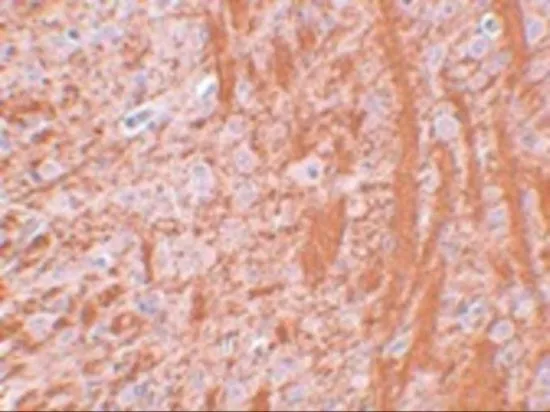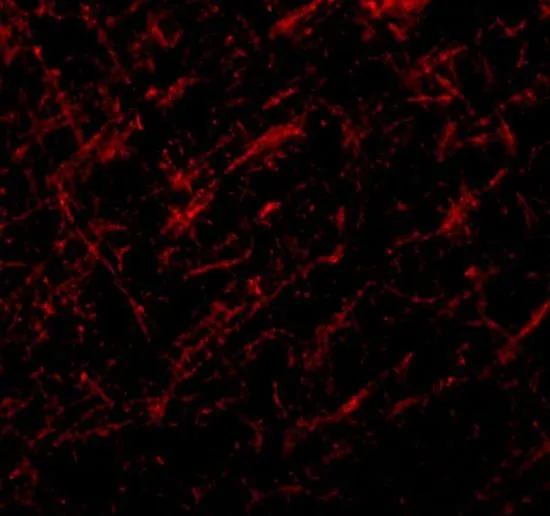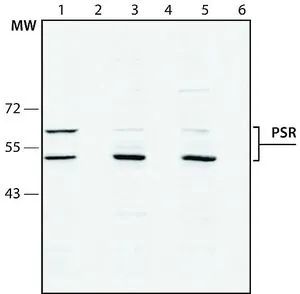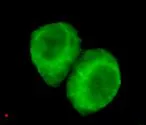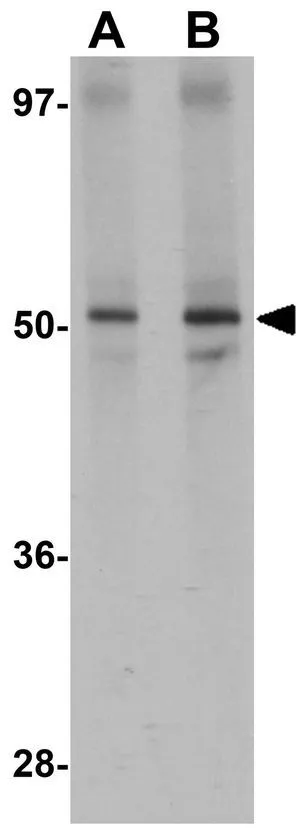
WB analysis of human brain tissue lysate using GTX31387 PSR antibody. Working concentration : (A) 1 and (B) 2 microg/ml
PSR antibody
GTX31387
ApplicationsWestern Blot, ELISA, ImmunoHistoChemistry, ImmunoHistoChemistry Paraffin
Product group Antibodies
TargetJMJD6
Overview
- SupplierGeneTex
- Product NamePSR antibody
- Delivery Days Customer9
- Application Supplier NoteWB: 1 - 2 microg/mL. IHC-P: 2.5 microg/mL. *Optimal dilutions/concentrations should be determined by the researcher.Not tested in other applications.
- ApplicationsWestern Blot, ELISA, ImmunoHistoChemistry, ImmunoHistoChemistry Paraffin
- CertificationResearch Use Only
- ClonalityPolyclonal
- Concentration1 mg/ml
- ConjugateUnconjugated
- Gene ID23210
- Target nameJMJD6
- Target descriptionjumonji domain containing 6, arginine demethylase and lysine hydroxylase
- Target synonymsPSR, PTDSR, PTDSR1, bifunctional arginine demethylase and lysyl-hydroxylase JMJD6, arginine demethylase and lysine hydroxylase, histone arginine demethylase JMJD6, jmjC domain-containing protein 6, jumonji domain-containing protein 6, lysyl-hydroxylase JMJD6, peptide-lysine 5-dioxygenase JMJD6, phosphatidylserine receptor
- HostRabbit
- IsotypeIgG
- Protein IDQ6NYC1
- Protein NameBifunctional arginine demethylase and lysyl-hydroxylase JMJD6
- Scientific DescriptionThis gene encodes a nuclear protein with a JmjC domain. JmjC domain-containing proteins are predicted to function as protein hydroxylases or histone demethylases. This protein was first identified as a putative phosphatidylserine receptor involved in phagocytosis of apoptotic cells; however, subsequent studies have indicated that it does not directly function in the clearance of apoptotic cells, and questioned whether it is a true phosphatidylserine receptor. Multiple transcript variants encoding different isoforms have been found for this gene. [provided by RefSeq, Jul 2008]
- Storage Instruction-20°C or -80°C,2°C to 8°C
- UNSPSC12352203

